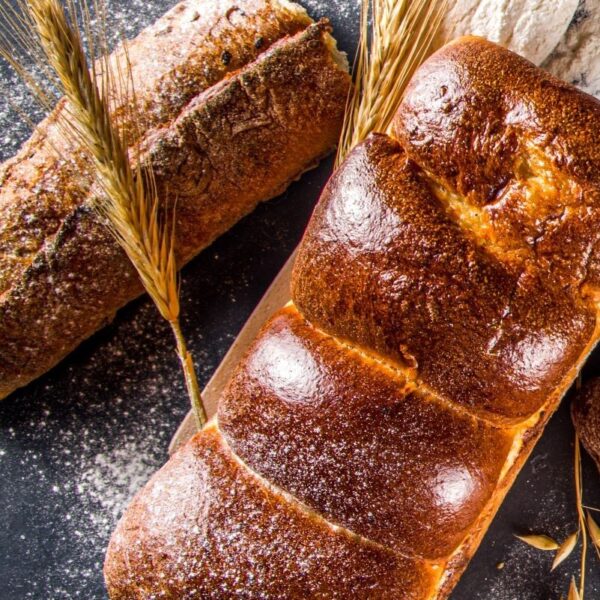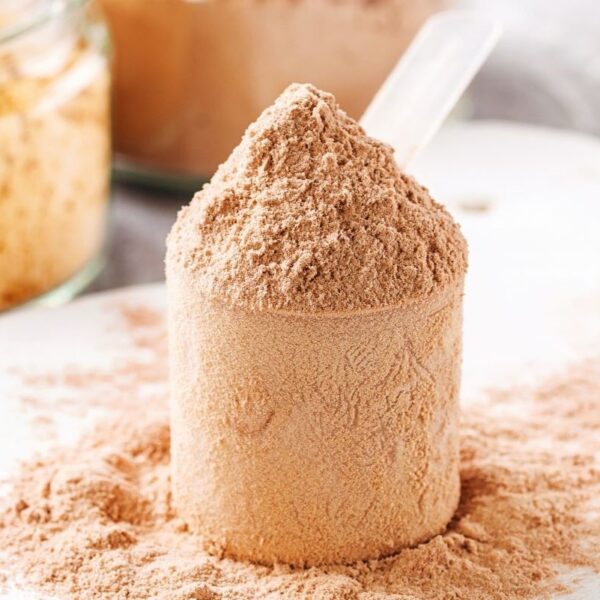Flavonoids are a diverse group of plant compounds responsible for the vibrant colors of fruits and vegetables. They are known for their antioxidant properties, which help protect the body against free radicals and oxidative stress. Flavonoids have been studied for their potential health benefits, including reducing the risk of chronic diseases such as heart disease, cancer, and neurodegenerative disorders. They also have anti-inflammatory and anti-allergic properties and may support immune function. Common sources of flavonoids include berries, citrus fruits, onions, tea, and cocoa. Incorporating various flavonoid-rich foods into the diet is essential for overall health and well-being.
What are Flavonoids?
Flavonoids are secondary metabolites and constitute a major group of polyphenols. A flavonoid mainly consists of a benzopyrone ring bearing phenolic or poly-phenolic groups at different positions. There are two phenyl rings (A and B) and a heterocyclic ring (C) containing the embedded oxygen). All naturally occurring flavonoids possess three hydroxyl groups, two on ring A at positions five and seven and one on ring B at position three.
Source: ResearchGate
They can be subdivided into different subgroups depending on the number of carbon atoms of the C ring to which the B ring is attached and the degree of unsaturation and oxidation of the C ring. Flavonoids in which the B ring is linked in position 3 of the C ring are called isoflavones. Those in which the B ring is linked in position 2 can be further subdivided into several subgroups based on the structural features of the C ring. The subgroups are flavones, flavonols, flavanones, catechins, and anthocyanins.
| Isoflavones | Flavones |
| Flavonols | Flavanones |
| Flavan-3-ol | Anthocyanin |
Source: Wikipedia, ResearchGate
Sources of Flavonoids
Important dietary sources of flavonoids are vegetables, fruits, seeds, cereals, wine, tea, and certain spices. The presence of flavonoids in vegetables and fruits varies greatly depending on the crop variety, processing, climate, seasonality, plant species, manufacture, and storage. The flavonoid content of a few food products according to the flavonoid subclass is given below. [1].
Flavanones
| Food Item | % |
| Artichokes | 12.51 |
| Grapefruit juice | 18.98 |
| Orange juice | 18.99 |
| Oranges | 42.57 |
| Limes | 46.4 |
| Lemons | 49.81 |
| Grapefruit | 54.5 |
| Dried oregano | 412.13 |
Flavones
| Food Item | % |
| Kohlrabi | 1.3 |
| Red grapes | 1.3 |
| Lemons | 1.9 |
| Chicory | 2.85 |
| Celeriac | 3.9 |
| Green pepper | 4.71 |
| Artichokes | 9.69 |
| Fresh parsley | 216.15 |
| Dried oregano | 1046.46 |
| Dried parsley | 4523.25 |
Anthocyanins
| Food Item | % |
| Hazel nuts | 6.71 |
| Morello cherries | 7.45 |
| Pears | 12.18 |
| Black grapes | 21.63 |
| Red table wine | 23.18 |
| Pecan nuts | 25.02 |
| Strawberries | 27.76 |
| Red bilberries | 40.15 |
| Raspberries | 40.63 |
| Red cabbage | 63.5 |
| Red currants | 75.02 |
| Blackberries | 90.64 |
| American bilberries | 141.03 |
| Black currants | 154.77 |
| Chickpeas | 262.49 |
| Bilberries | 285.21 |
| Aronia | 349.79 |
| Elderberry juice concentrate | 411.4 |
Flavonols
| Food Item | % |
| Apples | Mean 3.40 |
| Cooked Brussels sprouts | 5.24 |
| Fresh figs | 5.47 |
| Dried cranberries | 6.91 |
| Buckwheat | 7.09 |
| Chicory | 8.94 |
| Morello cherries | 9.41 |
| American bilberries | 10.59 |
| Blackcurrants | 11.53 |
| Cooked asparagus | 15.16 |
| Fresh cranberries | 21.59 |
| Goji berries | 31.2 |
| Apple juice | 5.96 |
| Apricots | 8.41 |
| Peaches | 8.6 |
| Apples | 9.17 |
| Red table wine | 11.05 |
| Pecan nuts | 15.99 |
| Cooked broad beans | 20.63 |
| Blackberries | 42.5 |
| Cocoa, dry powder | 52.73 |
| Dark chocolate | 108.6 |
| Black tea, brewed | 115.57 |
| Green tea, brewed | 116.15 |
Intake
National Health and Nutrition Examination Survey (NHANES) estimated flavonoid intakes in US adults (aged ≥19 years) average between 200 and 250 mg/day, with 80% being flavan-3-ols, 8% for flavonols, 6% for flavanones, 5% for anthocyanidins, and ≤1% for isoflavones and flavones [2, 3]. Whereas for Europe, the mean intake of total flavonoids was 428±49 mg/d, of which 136±14 mg/d were monomeric compounds [4].
List of Flavonoids
Over 10,000 flavonoid compounds have been isolated and identified.
| Subclass | Examples | Sources |
| Flavones | Luteolin, Apigenin, Chrysin, Baicalein | Chamomile, Parsley, Roots |
| Flavonols | Quercetin, Kaempferol, Myricetin, Fisetin | Onion Leaves, Broccoli, Apples, Black Tea, Black Grapes |
| Flavanols (Flavan-3-Ols) | Catechin, Epicatechin, Epigallocatechin-Gallate, Proanthocyanidins | Green Tea, Cocoa, Legumes, Red Wine |
| Flavanones | Naringenin, Hesperetin, Naringin, Hesperidin | Tomatoes, Citrus Fruits (Peels) |
| Isoflavones | Genistein, Daidzein, Puerarin | Soy Products, Herbs |
| Anthocyanins | Cyanidin, Delphinidin, Pelargonidin, Malvidin | Berry-Type Fruits, Red Wine |
Classification of Phenolic Compounds
Flavonoids are classified into various types depending on their chemical structure, degree of unsaturation, and oxidation of carbon rings.
Flavonols
| Chemistry, Sources & Significance | Well-Known Compounds |
| Flavonols have the 3-hydroxyflavone backbone. Their diversity stems from the different positions of the phenolic –OH groups. They are typically found as glycosides with conjugation occurring at the 5, 7, 3′, 4′, and 5′ positions. Although the number of aglycones is limited, there are more than 200 sugar conjugates of kaempferol. Flavonols occur widely throughout the plant kingdom except for fungi and algae. In Western populations, the estimated daily intake is 20–50 mg per day for flavanols. They are present mainly in onions at concentrations up to 1.2 g kg−1 fresh weight and in kale, leeks, broccoli, etc. They can also be found in red wine and tea in their glycosylated form with glucose or rhamnose. Significant differences in concentration can be found in different fruits, even coming from the same tree, since their biosynthesis is favored by sunlight exposure [5]. | Flavonols: Kaempferol, Quercetin, Isorhamnetin, Myricetin, Pachypodol, Rhamnazin, Rhamnetin, Kaempferide, Galangin, Azaleatin, 3-Hydroxyflavone Flavonol Glycosides: Astragalin, Hyperoside, Isoquercitin, Myricitrin, Robinin, Spiraeoside, Amurensin, Troxerutin, Icariin |
Flavones
| Chemistry, Sources & Significance | Well-Known Compounds |
| Flavones are similar structurally to flavonols, except for the oxygenation at C-3. They are based on the backbone of 2-phenylchromen-4-one (2-phenyl-1-benzopyran-4-one). A wide range of substitutions is possible with flavones, including hydroxylation, methylation, O- and C-glycosylation, and alkylation. In general, flavones are not distributed widely, although substantial amounts have been detected in celery, parsley, spices, yellow and orange fruits, and some herbs. The estimated daily intake of flavones is about 2 mg per day. Many flavones occur as 7-O-glycosides with some exceptions like apigenin-8-C-glucoside (vitexin), apigenin-6-C-glucoside (isovitexin), luteolin-8-C-glucoside (orientin), and luteolin-6-C-glucoside (iso-orientin).Polymethoxylated flavones, such as nobiletin and tangeretin, occur in citrus species. | Apigenin, Luteolin, Wogonin, Baicalein, Tangeritin, Chrysin, 6-hydroxyflavone, Acacetin, Wogonin, Naringenin, Luteolin, Norartocarpetin, Scutellarein, Pectolinarigenin, Isoscutellarein, Zapotin, Nepetin, Eupatilin, Hypolaetin, Sinensetin, Nobiletin |
Isoflavones
| Chemistry, Sources & Significance | Well-Known Compounds |
| Isoflavones are isomers of flavones with the B-ring attached at C-3 rather than at the C-2 position. Isoflavones are produced almost exclusively by the bean family members Fabaceae (Leguminosae). They are found in various forms as 7-O-(6″-O-malonyl) glucosides, 7-O-(6″-O-acetyl)glucosides, 7-O-glucosides, and some aglycones. Soy is a rich source of isoflavones. Fermented soy products can be rich in aglycones due to hydrolysis of the glycosides. In contrast, products whose manufacture involves heating, such as soy milk and tofu, contain reduced quantities of isoflavones as a result of degradation of malonyl- and acetylglucosides. Isoflavones are phenolic compounds that are structurally and functionally similar to 17β-estradiol. They have weak estrogen-like effects and antioxidant activity and are classified as phytoestrogens. | Aglycones: Daidzein, Genistein, Glycitein, Formononetin, Biochanin A, Equol, Glucosides: Daidzin, Genistin, Glycitin, Ononin, Sissotrin, Modified Forms: Acetyldaidzin, Acetylglycitin, Malonylglycitin, Malonylsissotrin |
Flavanones
| Chemistry, Sources & Significance | Well-Known Compounds |
| Flavanones are characterized by the absence of Δ2,3 double bonds and the presence of a chiral center at C-2. Flavanones are predominantly the S-enantiomer with the C-ring attached to the B-ring at C-2 in the α-configuration. Flavanones are present as hydroxyl, glycosylated, and O-methylated derivatives. There are exceptionally high amounts in flavedo of citrus fruits, where the main aglycones are naringenin in grapefruit, hesperitin in oranges, and eriodictyol in lemons. Flavanones are generally glycosylated by a disaccharide at position 7 (either a neohesperidose, which imparts a bitter taste, or a rutinose, which is flavorless). Orange juice contains between 200 and 600 mg of hesperidin per liter and 15–85 mg of narirutin per liter [6]. | Aglycones: Blumeatin, Butin, Eriodictyol, Hesperetin, Homoeriodictyol, Naringenin, Sakuranetin, Pinocembrin Glycoside: Hesperidin, Naringin, Sakuranin |
Anthocyanidins
| Chemistry, Sources & Significance | Well-Known Compounds |
| Anthocyanins are heterosides of an aglycone unit (anthocyanidin), a flavylium ion derivative. Anthocyanidins have a 2-phenyl-benzopyrylium core, and hydroxylation positions can be C3 in the C ring and 3′, 4′, and 5′ position in the B ring of the molecule. Anthocyanidin aglycones form conjugates with sugars and organic acids to generate a multitude of anthocyanins of differing colors.They are pigments found in many foods, in which they are responsible for the cyan, pink, red, or purple color. They change color as a function of pH. Most plant anthocyanins are based on cyanidin (30%), delphinidin (22%), and pelargonidin (18%). | Pelargonidin, Cyanidin, Delphinidin, Peonidin, Petunidin, Malvidin, Rosinidin, Aurantinidin |
Flavan-3-ols
| Chemistry, Sources & Significance | Well-Known Compounds |
| Flavan-3-ols have a 2-phenyl-3,4-dihydro-2H-chromen-3-ol skeleton. They are the most complex subclass of flavonoids, ranging from the simple monomers to the oligomeric and polymeric proanthocyanidins, also known as condensed tannins. The two chiral centers at C2 and C3 of the monomeric flavan-3-ol produce four isomers for each level of B-ring hydroxylation, two of which are (+) & two (−). Anthocyanins are aglycones (highly unstable), glycosylated with glucose at position 3, and esterified with different organic acids (citric and malic acids) and phenolic acids. Oligomeric and polymeric proanthocyanidins can occur as polymers of up to 50 units.Green tea contains very high levels of flavan-3-ol monomers. | Aglycones: Catechin, Epicatechin, Epigallocatechin, Epicatechin gallate, Epigallocatechin gallate, Afzelechin, Gallocatechin, Epiafzelechin, Fisetinidol, Robinetinidol Oligomers: Procyanidins, Prodelphinidins, Proguibourtinidins, Prorobinetinidins |
Dihydrochalcones
| Chemistry, Sources & Significance | Well-Known Compounds |
| This minor group of flavonoids with an open C-ring structure is of limited dietary significance.Apples contain phloretin-2′-O-glucoside (phloridzin) and phloretin-2′-O-(2′′-O-xylosyl)glucoside. While rooibos tea is known for containing 2′,3,4,4′,6′-pentahydroxydihydrochalcone-3′-C-glucoside (aspalathin) and 2′,4,4′,6′-tetrahydroxydihydrochalcone-3′-C-glucoside (nothofagin). | Phloridzin, Aspalathin, Nothofagin |
Methods of Extraction
Conventional Methods
Conventional extraction techniques are characterized by using conventional solvents, with or without heat, and usually under agitation. In a standard traditional extraction, the sample is homogenized and submerged in a solvent or a mix of solvents. Using this extraction method, flavonoids are obtained through the diffusion and mass-transfer phenomena.
Novel Methods
Non-conventional extraction techniques put their effort into concentrating the energy to extract the bioactive compounds more efficiently and selectively than in conventional extractions [7].
| Technique | Variables | Benefits | Drawbacks |
| Microwave-assisted extraction | Frequency, S/L ratio, Solvent, Temperature, Time | – Higher yields and productivity – Lower extraction times and solvent consumption | – Filtration step required f=before extraction – Not suitable for unstable compounds. |
| High-pressure extraction | Temperature, Pressure, Type of solvent and concentration, Holding pressure time, S/L ratio | – Low-temperature extraction suitable for heat-sensitive components – Lower extraction times and solvent consumption | |
| Supercritical fluid-assisted extraction | Time, Temperature, | – Better time of the extraction, yield, selectivity, and quality | – Compounds must be polar, and solvent must not be too viscous and absorb microwave energy. |
| Supercritical fluid assisted extraction | Pressure, Temperature, Time, Solvent, Cylinder volume | Ultrasound-assisted extraction |
Absorption, Metabolism and Excretion
Flavonoids are generally absorbed by passive diffusion after the glycosylated flavonoids are converted to their aglycones. The colon microflora would play an essential role in this conversion. The bioavailability of flavonoids is only partial, with the proportion of the absorbed ingested amount varying from 0.2 to 0.9% for tea catechins to 20% for quercetin and isoflavones [8, 9]. Thus, a large fraction remains unabsorbed, exposing the gastrointestinal mucosa to exceptionally high concentrations of these compounds.
After absorption, the flavonoids are conjugated in the liver by glucuronidation, sulfation, methylation, or metabolized to more minor phenolic compounds [10]. The bioavailability of certain flavonoids differs markedly depending on the food source.
Bioavailability
The bioavailability of bioactive compounds describes the absorptive process of these molecules across the intestine into the circulatory system after food ingestion. Food processing, such as blanching and thermal treatments, may influence the levels of flavonoids in food products and induce their conversion to secondary compounds. The absorption and bioavailability of phenolic compounds involve many small intestine and colon enzymes.
The bioavailability of phenolic compounds is influenced by chemical structure, food processing, and matrix, host. Besides all, these factors can interact with each other and affect the phenolic compound’s bioavailability [11].
- The chemical structure of a phenolic compound affects its solubility, glycosylation, acetylation, methylation, and polymerization. These chemical modifications and intrinsic properties affect bioavailability.
- Food matrix also plays an essential role as phenolics can have covalent interactions with glycosides from the cell wall, and the bran matrix severely hinders their access to the necessary enzymes.
- The dietary intake format, metabolism mechanism, and bodily tendency also cause significant differences in bioavailability.
Interaction with Food Matrix
The presence of macronutrients in food influences the bioavailability of co-ingested flavonoids. The binding affinity and potential non-covalent interactions of flavonoids with food proteins, carbohydrates, and fats are directly associated with the physicochemical properties of flavonoids [12]. Proteins in milk might reduce the absorption of polyphenols from cocoa or black tea [13]. Some carbohydrate-rich foods may increase the deglycosylation and absorption of flavonoids by stimulating gastrointestinal motility, mucosal blood flow, and colonic fermentation. Conversely, dietary flavonoids have been shown to interfere with carbohydrate digestion and absorption [14].
Mechanism of Action
Flavonoids exert their biological effects through various mechanisms of action. These complex mechanisms can vary depending on the specific compound and the target tissue or organ. Their diverse biological activities make them promising candidates for preventing and treating various diseases. Some key mechanisms include:
| Mechanism | Description |
| Antioxidant | Flavonoids act as exogenous antioxidants. They work by inhibiting nitric-oxide synthase activity, inhibiting xanthine oxidase activity, modulating channel pathways, or interacting with other enzyme systems [15]. |
| Anti-inflammatory | Flavonoids exert anti-inflammatory activity by inhibiting pro-inflammatory mediators and cyclooxygenases by inhibiting their activity or gene expression [16]. |
| Antibacterial | Sacriflavone A and Sacriflavone B exhibited antifungal activity against different Fusarium oxysporum f. sp. dianthi pathotypes [20]. Prenyl flavonoid isolated from Dalea elegans showed antifungal effects against Candida albicans biofilms [21]. |
| Antiviral | Flavonoids exhibit antiviral properties by preventing the growth of viruses due to intrinsic antiviral properties, inhibition of proteins, and improving immunity. Inhibit influenza A virus replication by early regulation of interleukin-1 beta and interleukin-8 via protein gene expression [19]. |
| Antifungal | Flavonoids alleviate allergic symptoms by inhibiting the activation of mast and basophil cells [22]. Flavonoids inhibit histamine release, synthesis of IL-4 and IL-13, and CD40 ligand expression by basophils [23]. |
| Anti-allergy | Flavonoids alleviate allergic symptoms by inhibiting the activation of mast and basophil cells [22].Flavonoids inhibit histamine release, synthesis of IL-4 and IL-13, and CD40 ligand expression by basophils [23]. |
Flavonoid Intake & Prevention of Diseases
Observational studies evaluating the association between total dietary flavonoid and risk of all causes, cardiovascular and cancer mortality in the general population have reported a negative correlation. The reduction in the risk of all-cause mortality had a significant variation from 18% to 40% for an intake of 200–350mg/day of total flavonoids [24, 25]. A diet rich in flavonoids may reduce the risk of various diseases. Flavonoids, terpenoids, and polyketides are structurally diverse secondary metabolites used widely in nutraceuticals.
Potential Health Benefits
The consumption of food flavonoids, to date, is considered safe and shows benefits related to reducing the risk for various diseases. The results are promising regarding treatment with supplementation of flavonoids, isolated or in combination, and many mechanisms are established in vitro and animal models.
| Benefit | Mechanism | Flavonoids |
| Cardioprotective | An increase in the total flavonoid intake of 500 mg/d was associated with a significant risk reduction of 5%. | Isoflavones & Anthocyanins [26] |
| Protecting lipids against oxidative damage, counteract plasma LDL oxidation and ameliorate inflammation of the blood vessel endothelium. | Morin [27] | |
| Protecting lipids against oxidative damage, counteract plasma LDL oxidation, and ameliorate inflammation of the blood vessel endothelium. | Flavonoids [28] | |
| Protecting lipids against oxidative damage, counteract plasma LDL oxidation, and ameliorate inflammation of the blood vessel endothelium. | Flavonoids [29] | |
| Antiplatelet aggregation effect through inhibition of the arachidonic acid-based pathway. | Quercetin-3-O-(6′-malonyl) glucoside, epigallocatechin-3-gallate [30] | |
| Reduction of blood cholesterol level in patients with high CVD risk. | Anthocyanins [31] | |
| Anti-diabetic | Antiproliferative and apoptosis-inducing activities in several cancer human cell lines, i.e., gastric, colon, breast, lung, liver, head, and neck cancers. | Flavonoids [32] |
| Inhibition of cytochrome P450 isozymes, such as CYP1A1 and CYP1A2, and protection against cellular damage by carcinogens. | Flavonoids [33] | |
| Insulin sensitization and improvement in glucose tolerance. | Naringenin [34] | |
| Anticancer | Reduced breast cancer risk in both pre-and postmenopausal women from Asia. | Naringenin, Apigenin, Quercetin, and Hesperidin [35] [36] |
| Induction of phase II metabolizing antioxidant enzymes such as glutathione S transferase (GST) and UDP-glucuronyltransferase (UDP-GT). | Flavonoids [37] | |
| Regulation of the neuronal signal cascade, which inhibits cell apoptosis caused by neurotoxic substances. | Kaempferol [38] | |
| Inhibition of HMGB1-induced TNF-α and IL-1β mRNA expression. | Quercetin [39] | |
| Reduced the viability and induced apoptosis of human head and neck squamous cell carcinoma (HNSCC) cells. | Isoflavones [40] | |
| Cancer chemopreventive agent with DNA topoisomerase I (Topo I) inhibitory activity. | Epigallocatechin-3-gallate [41] | |
| Inhibition of matrix metalloproteinases (MMPs). | Kaempferol [42] | |
| Protect effectively against oxidative neuronal damage and may also decrease inflammation. | Proanthocyanidins [43] | |
| Neuroprotective | (Myricetin, Quercetin, Kaempferol, Andmorin, Apigenin [48] | Flavonoids [44] |
| Inhibit BACE-1 activity in both the cell-free system and neuronal cells. | Flavonoids [45] | |
| Improvement of the cerebral blood flow. | Flavonol [46] | |
| Increase the amount of the brain-derived neurotrophic factor (BDNF). | Flavonoids [47] | |
| Prevention of Aβ peptides-induced neurotoxicity, elongation of the fibrils, and stabilization of the formed fibrils in cell cultures. | (Myricetin, Quercetin, Kaempherol, Andmorin, Apigenin [48] | |
| Reduction in toxic levels of Aβ in the brain, and also mitochondrial dysfunction in Alzheimer’s disease brains. | Luteolin [49] | |
| Prevention of Aβ peptides-induced neurotoxicity, elongation of the fibrils, and stabilization of the formed fibrils in cell cultures | Epigallocatechin gallate [50] |
Fun Facts About Flavonoids
- Flavonoids are a large family of over 6,000 different polyphenolic compounds.
- Flavonoids are responsible for many fruits, vegetables, and flowers blue, red, and purple colors. For instance, anthocyanins, a type of flavonoid, give blueberries their blue color.
- In plants, flavonoids help protect against UV radiation. When exposed to UV light, a plant can produce more flavonoids to shield its cells from damage.
- They can also act as natural pesticides, deterring herbivores and preventing fungal infections in some plants.
- Consumption of flavonoid-rich foods, like dark chocolate and red wine (in moderation), has been associated with improved heart health.
- Certain flavonoids have been suggested to benefit brain health and improve memory and cognitive function.
- Flavonoids are known for their antioxidant properties, which can help combat free radicals in the body, potentially reducing the risk of certain diseases.
- Tea, especially green tea, is rich in a type of flavonoid called catechins. These compounds are believed to have several health benefits.
- Some flavonoids have anti-inflammatory properties, which might help in conditions like arthritis.
- Dark chocolate is a delicious source of flavonoids, especially flavanols.
- The flavonoids in red wine, particularly resveratrol, have been linked to various health benefits, though it’s important to drink in moderation.
- Some flavonoids can affect how certain medications work, so it’s best to talk with a healthcare provider before taking supplements.
- While flavonoids are primarily found in plants, certain fungi also produce them.
- The medicinal properties of flavonoid-rich plants have been recognized for millennia. Many traditional medicines incorporate herbs and foods high in flavonoids for their therapeutic benefits.
Additional Resources
- NAL USDA – USDA Database for the Flavonoid Content of Selected Foods, Release 3.2 November 2015
- ScienceDirect – Article pii/S0022316622087508
- Springer – Article 10.1007/s00394-015-0942-x
- PubMed – 26010916
- AJEV Online – Content 46/2/187
- Wiley Online Library – DOI 10.1002/(SICI)1097-0010(20000515)80:7<1073::AID-JSFA568>3.0.CO;2-B
- IntechOpen – Chapters 79721
- PubMed – 7491892
- Cancer Epidemiology, Biomarkers & Prevention – Article PDF 4/4/393
- Wiley Online Library – DOI 10.1111/j.1753-4887.1998.tb01670.x
- ALAN Revista – Ediciones 2016/2/art-1
- PubMed – 25633078
- PubMed – 21805622
- Oregon State University – Flavonoids Metabolism and Bioavailability
- AJCN – DOI 10.1093/ajcn/74.4.418
- PubMed – 25139581
- Hindawi – DOI 10.1155/2013/162750
- Food Research International – DOI 10.1016/j.foodres.2015.06.021
- Journal of Medical Virology – DOI 10.1002/jmv.25295
- ScienceDirect – Article pii/S0022286015000642
- Phytomedicine – DOI 10.1016/j.phymed.2015.07.003
- ScienceDirect – Article pii/S0753332222013348
- PubMed – 17384531
- Molecular Nutrition & Food Research – DOI 10.1002/mnfr.201601003
- AJCN – DOI 10.3945/ajcn.113.073106
- DOI – 10.1016/j.numecd.2014.01.015
- DOI – 10.1007/s11033-018-04575-9
- PubMed – 22400181
- ScienceDirect – Article pii/S0014299917302510
- NCBI PMC – Article PMC4492635
- NCBI PMC – Article PMC3042791
- Taylor & Francis Online – DOI 10.2147/DMSO.S238483
- DOI – 10.1016/j.clnu.2013.03.011
- DOI – 10.1210/en.2014-2003
- DOI – 10.1021/tx100286d
- DOI – 10.1021/tx900127s
- NCBI PMC – Article PMC7400824
- DOI – 10.1016/j.ejmech.2016.02.045
- NCBI PMC – Article PMC2784404
- Springer – Articles CAS-Redirect 1
- MDPI – DOI 10.3390/md15070217
- Scholar Google – Title Matrix Metalloproteinases
- MDPI – DOI 10.3390/molecules21121610
- NCBI PMC – Article PMC5465813
- NCBI PMC – Article PMC2474943
- NCBI PMC – Article PMC7687895
- NCBI PMC – Article PMC7057203
- DOI – 10.1016/j.bbagen.2008.01.017
- Scholar Google – Title Green Tea Epigallocatechin-3-Gallate
- DOI – 10.2174/1389450116666150825113655










